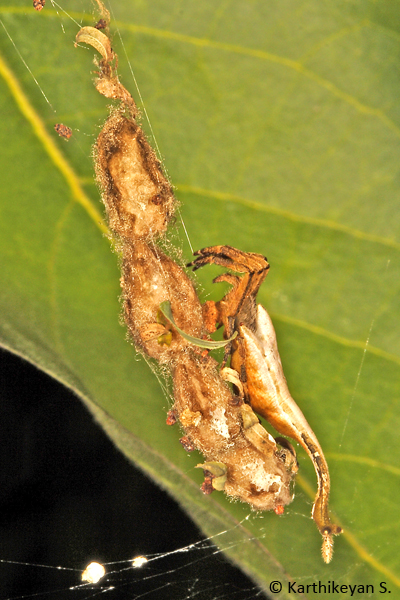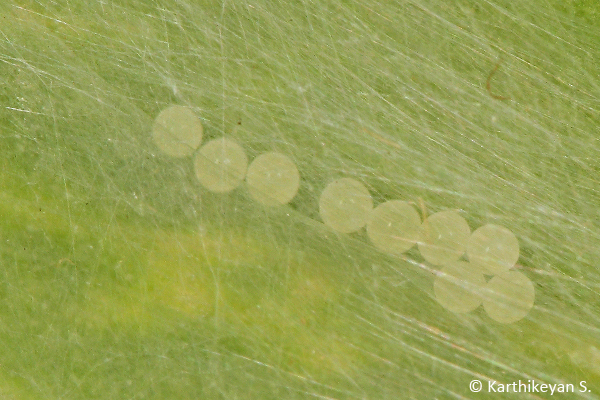Someone walking with head bent down is not necessarily doing so out of boredom, frustration or dejection. The person could simply be searching for spiders on the ground!
A casual stroll on the wild side looking down is likely to be productive. I do this very often and have been amply rewarded; I have seen spiders running away from my path; particularly wolf spiders with egg cases attached to their spinnerets.
However, one sighting was very interesting. This I realized only when I looked at the spider through my camera. The spider had an egg case attached to the spinneret. But what made things interesting were the spiderlings. They had just emerged and had scampered on to the back of the female – the entire back of the spider was covered with little spiders!
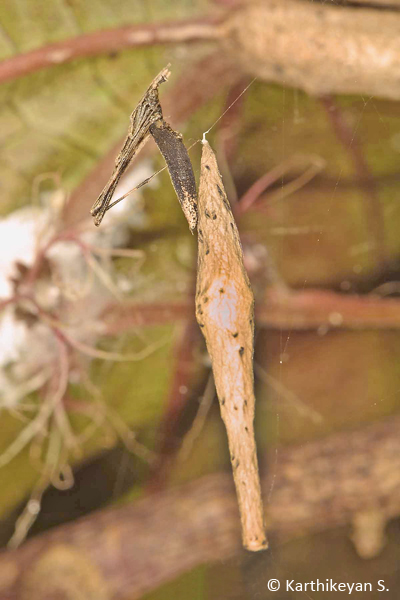
Spiders sometimes build egg cases much larger than themselves like eg. the spindle shaped egg case of Rhomphaea sp. (Family Theridiidae)
While some attach their egg cases to a leaf others incorporate it in the silken retreat that they build for themselves.
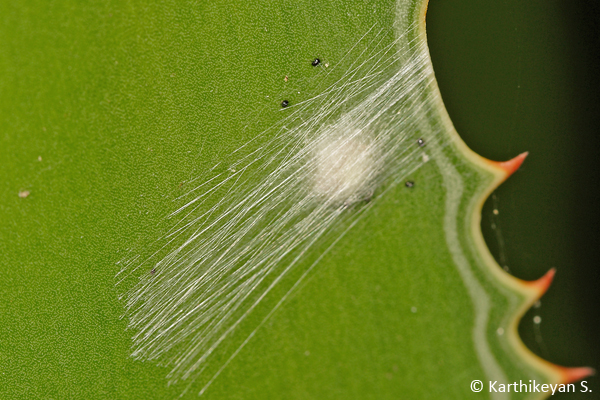 An egg case tethered to a leaf by means of silk.
An egg case tethered to a leaf by means of silk.
The females also guard the egg cases until the young hatch from the eggs.
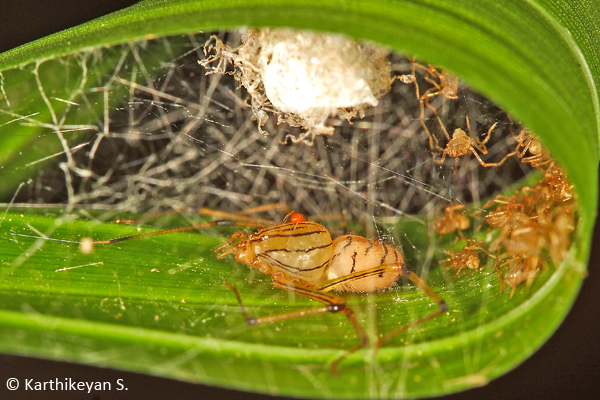 A Spitting Spider Scytodes pallida with egg case and young ones all enclosed within a leafy retreat.
A Spitting Spider Scytodes pallida with egg case and young ones all enclosed within a leafy retreat.
With some effort I have managed to see and photograph an array of situations where adult spiders were ensuring the safety of their next generation. It has been fascinating.
But there was one thing that kept nagging me for a long time. How do the eggs of spiders look? This question was answered during a visit to Kabini. On my usual rambles on the property, looking for the many interesting things Nature always has in store, I espied a few tiny white spots on the underside of a leaf above my head. On closer observation I noticed some silken strands and several little spiders. The white spots were spider eggs (shrivelled) from which the spiderlings had emerged.
My excitement was on a high as I went about photographing what I saw. When I finished, the excitement very quickly gave way to disappointment as I had missed opportunity to see the eggs. How do I tell a complete story without the picture of the eggs prior to hatching?
Could there be another leaf in the vicinity that could be hiding the eggs? “Why not?” It could very well be possible – I said to myself. Just out of sheer curiosity and renewed energy I looked about carefully on the same plant under the leaves. My efforts were suitably rewarded. In a very similar situation, I saw a bunch of greenish spheres stuck to a leaf – I was staring at spider eggs indeed!
What I have showcased is just a very small sample of what goes on in a spider’s life and represents only a handful of species. However, spiders are a very large group with over 50,000 species world over. Consequently, one should expect a plethora of different strategies used to ensure continuity of the species. The variety in the size, colour and number of eggs, the kind of places they choose to lay them, the manner in which they are taken care of, and where egg cases are made – their size and shape, how the young are taken care of after they hatch from the eggs and more is truly amazing! All this make good topics that can keep a naturalist on his toes for many many years.
With a little curious exploration, you can be treated to this and more. So, go out there and investigate your neighbourhood with care.
